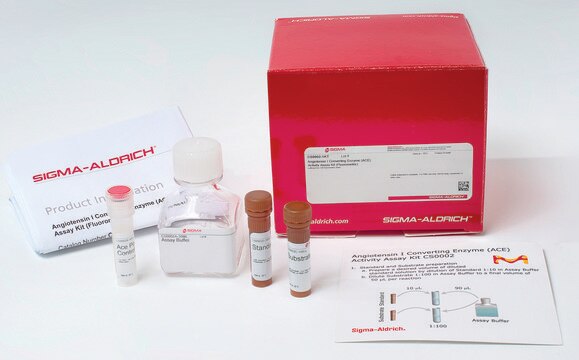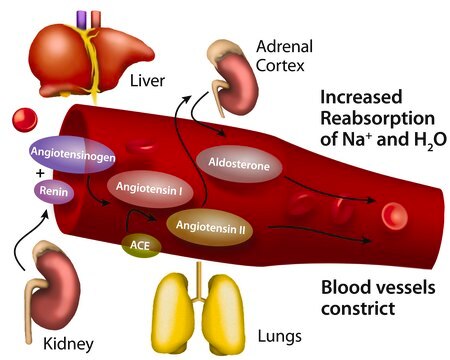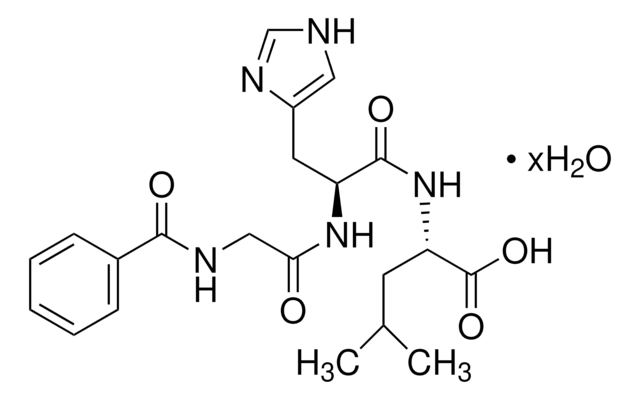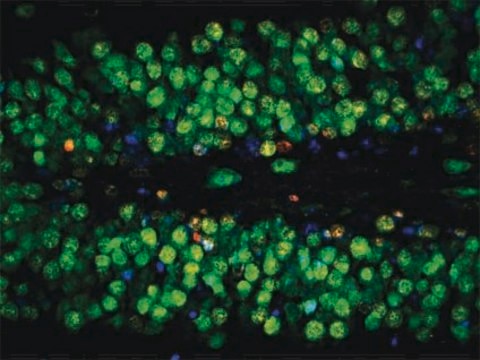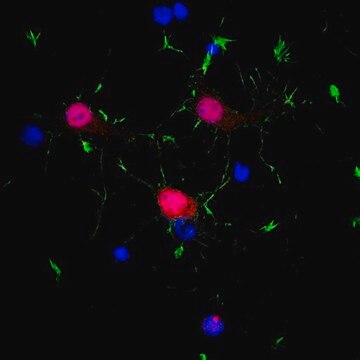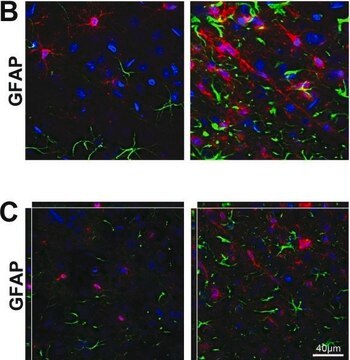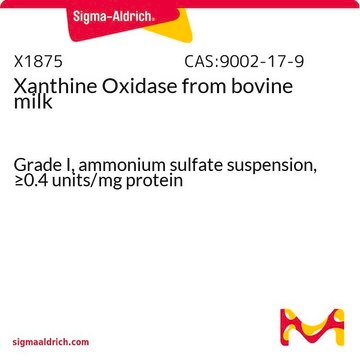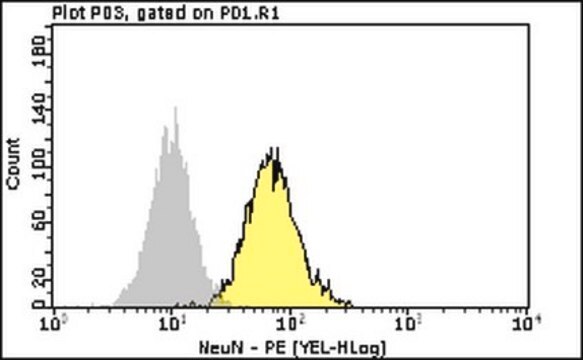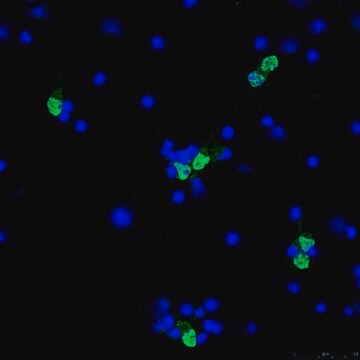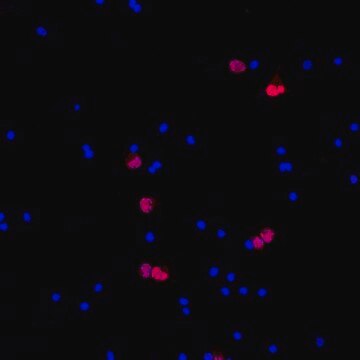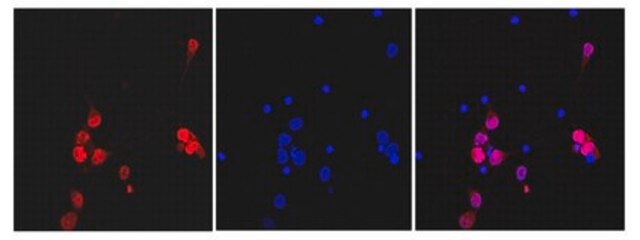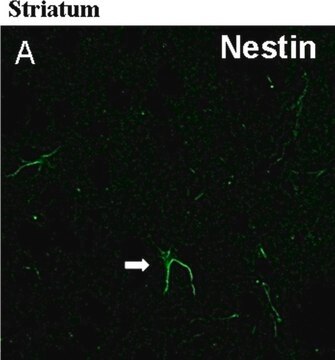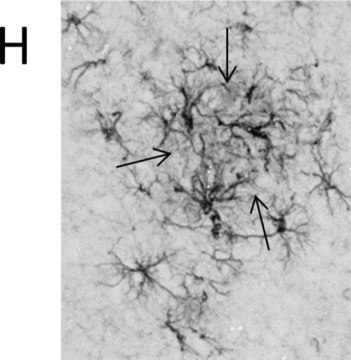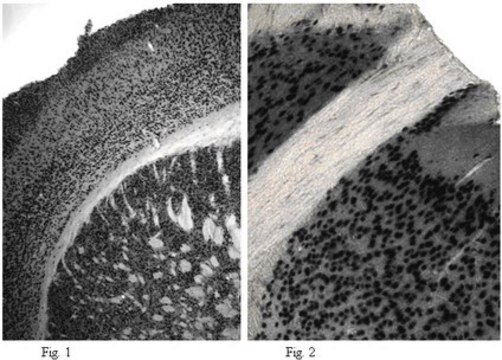MAB377
Anti-NeuN Antibody, clone A60
clone A60, Chemicon®, from mouse
Synonym(s):
Neuron-Specific Nuclear Protein, Neuna60, A60
About This Item
Recommended Products
biological source
mouse
Quality Level
antibody form
purified immunoglobulin
antibody product type
primary antibodies
clone
A60, monoclonal
species reactivity
avian, pig, chicken, human, rat, salamander, ferret, mouse
manufacturer/tradename
Chemicon®
technique(s)
flow cytometry: suitable
immunocytochemistry: suitable
immunofluorescence: suitable
immunohistochemistry (formalin-fixed, paraffin-embedded sections): suitable
immunoprecipitation (IP): suitable
western blot: suitable
isotype
IgG1
shipped in
wet ice
target post-translational modification
unmodified
Gene Information
human ... RBFOX3(146713)
mouse ... Rbfox3(52897)
rat ... Rbfox3(287847)
Related Categories
General description
Specificity
Immunogen
Application
Neuroscience
Neuronal & Glial Markers
A previous lot of this antibody recognized 2-3 bands in the 46-48 kDa range and possibly another band at approximately 66 kDa.
Immunocytochemistry:
1:10-1:100 dilution from a previous lot was used. Neurons in culture should be permeablized with 0.1% triton X-100. All primary antibody dilutions should be performed with simple solutions containing only buffer and primary antibody without excess protein blocks or detergents.
Immunohistochemistry:
1:100-1:1,000. The antibody works best on polyester wax embedded tissue but also works on paraffin embedded tissue at a lower working dilution. The antibody works well with formaldehyde-based fixatives. Citric acid and microwave pretreatment has been used successfully (Sarnat, 1998).
Immunohistochemistry(paraffin) Analysis: A previous lot was used for IH(P).
Optimal working dilutions must be determined by end user.
Quality
Immunohistochemistry(paraffin) Analysis:
NeuN (cat. # MAB377) staining pattern/morphology in rat cerebellum. Tissue pretreated with Citrate, pH 6.0. This lot of antibody was diluted to 1:100, using IHC-Select Detection with HRP-DAB. Immunoreactivity is seen as nuclear staining in the neurons in the granular layer. Note that there is no signal detected in the nucleus of Purkinje cells.
Optimal Staining With Citrate Buffer, pH 6.0, Epitope Retrieval: Rat Cerebellum
Target description
Physical form
Storage and Stability
Analysis Note
Positive control -Brain Tissue. Negative control - Any non neuronal tissue eg Fibroblasts
Legal Information
Disclaimer
Not finding the right product?
Try our Product Selector Tool.
wgk_germany
WGK 2
flash_point_f
Not applicable
flash_point_c
Not applicable
Certificates of Analysis (COA)
Search for Certificates of Analysis (COA) by entering the products Lot/Batch Number. Lot and Batch Numbers can be found on a product’s label following the words ‘Lot’ or ‘Batch’.
Already Own This Product?
Find documentation for the products that you have recently purchased in the Document Library.
Customers Also Viewed
Our team of scientists has experience in all areas of research including Life Science, Material Science, Chemical Synthesis, Chromatography, Analytical and many others.
Contact Technical Service